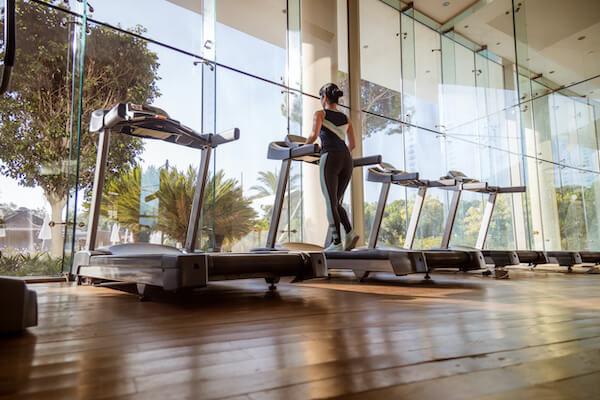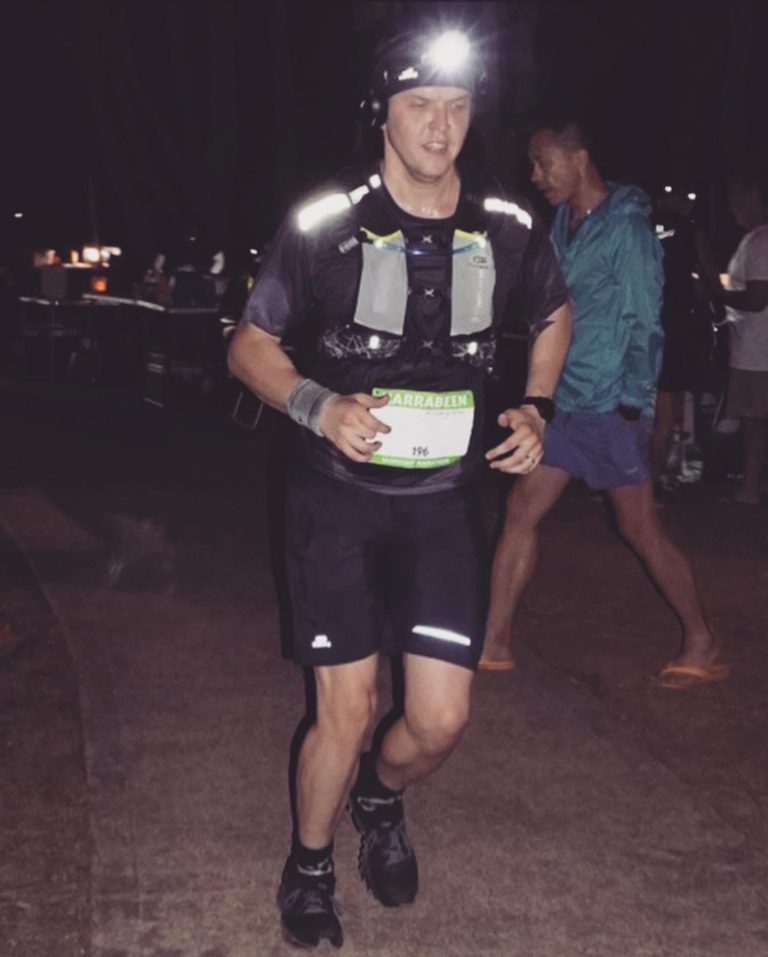The best part about running is that you don’t need more than a pair of running shoes to get started. Running on different surfaces is a luxury of goods that we striders get given to us.
From mountain trail ultramarathons, to concrete paved marathons – we runners love to test the limits of the human body and enjoy the sport we all love so much.
As you get further with your running journey, you may start to play around with other surfaces that catch your eye. Below we talk about what some of the most popular surfaces to run on are and some of the pro’s and cons of both.
1. Asphalt

The best thing about running on asphalt tracks is: almost all roads are built from asphalt. All neighborhoods have asphalt roads. So when it comes to tracking your run with a smartwatch, a phone or a GPS gadget, running on asphalt can give you the best and most accurate results from your running devices.
It is not hard to track since asphalt roads are often registered in online and physical maps. So if you are new in a place or visiting an area but do not want to miss running, asphalt got you covered.
If you are mindful of your consistency and uniformity in running, asphalt also gives you advantages in those areas. Since asphalt is softer than concrete, it gives you better movement speed and more consistent agility. Its flatness and solidness put less strain on your Achilles tendon and less pressure on your arches.
Moreover, if you are training yourself to run on hard surfaces, make sure to consider asphalt as your primary setting. Out of all the hard surfaces that you can run on, asphalt has more advantages compared to concrete and cinder track.
Even though it has many advantages, asphalt still has its disadvantages. The first thing you need to deal with when running on asphalt is the traffic. Be mindful of the cars that are passing by and other vehicles. Make sure to practice safety road measures and educate yourself in knowing street and road signs to avoid danger and accidents.
Asphalt tracks can also jolt your joints and be hard on your muscles. However, compared to concrete and grass, I find asphalt a much better option since it is accessible to anyone and can be very beneficial to professional runners. For beginning runners, it is best to work on your muscles more before going on extreme practices on asphalt roads.
2. Grass

What we like about running on grass is it has a low impact on your body. Since grass is a soft surface, it gives less pressure on your muscles and joints. This quality of the grass is recommended for runners who have had running injuries before. Furthermore, grass surfaces are recommended for runners who aspire to become professional indoor running athletes.
Many indoor runners go for grass as their primary training ground as this surface boosts up their speed without worrying about muscle strains and tendon injuries. Furthermore, running on grass gives a more relaxing effect on your body.
This effect of grass on runners is the reason why this surface is the best for beginning runners. It does not pressure the body to give more muscle activity and it does not make you feel uncomfortable. Furthermore, you can use minimalist running shoes on grass and it will not affect your performance.
The disadvantages of grass will come from its surface consistency, environment and the runner directly. Since grass is mainly a cover of soil, expect that this surface will not be consistently flat. Holes, bumps and cracks can often be present on grass surfaces. This unevenness can be very dangerous to you if you have weak ankles and poor balance.
Another disadvantage of grass is it is slippery when it’s wet. This quality of grass surfaces can cause accidents, especially if you do not know how to properly maintain your posture while running. And, of course, grass can also be dangerous to those who have allergies.
Furthermore, the softer the surface, the more stamina you must insert into it to run efficiently. Yes, grass will not give extra pressure to your muscles but it can be very demanding when it comes to exerting effort and energy. This effect can be very disadvantageous to runners who have low stamina and energy since grass can easily tire them down.
3. Synthetic Track

A synthetic track surface is for a more changeling type of run and it is used in almost all athletic competitions. Usually coloured blue, red or orange to make it stand out in its usual location – the stadium. The synthetic track is flat and perfectly even as it is made for professional use. It has an exact distance, ranging from 50 meters up to 400 meters for various kinds of running competitions.
However, when running on synthetic track surfaces, you must have the proper equipment from shoes to headbands as its hardness can have a huge effect on the muscles and joints. Its hardness is not as forgiving as asphalt, meaning it is close to concrete surfaces. Make sure that your shoes have soft paddings that can reduce the impact of the surface on your ankles, Achilles heels and arches.
The benefits that synthetic tracks give are unmatched. If you want to learn how to run fast, run on synthetic tracks. These surfaces train the feet on maintaining consistency and agility when you run fast. And regardless of any weather conditions, synthetic tracks will consistently give you its best performance as a running surface. It is never slippery when wet.
However, synthetic track surfaces are not as accessible as asphalt and grass. You can see synthetic tracks mostly on stadiums and running fields that usually have entrance fees or membership fees. So if you are a beginner, you can least prioritize synthetic tracks and focus more primarily on knowing the basics of running on other surfaces.
4. Sand

The best thing about running on sand is that you exercise two aspects of your body: mental and physical. While running, you get to enjoy the beautiful and peaceful imagery of your running environment: the beach. The calmness of the sky, the sound of the birds and the smell of the sea can all contribute to your mental wellness.
Compared to running on mountain tracks, running on sand is less dangerous and less tedious. You can run barefoot while running on the sand as long as the temperature is not too hot.
Aside from this, sand also has advantages for your calves. Its very soft surface allows pressure to rest on the calves so it expands stronger and sturdier. Dry sand provides this feature very well compared to wet sand. Running barefoot also has its advantages.
Barefoot running on sand surfaces can strengthen your toes and feet. This effect is very good especially for those runners who often experience muscle cramps in these areas. Wet sand has the most low-impact effect on your body. However, the lower the impact of the surface to you means the softer the surface and will take away a lot of energy and stamina from you. So make sure you are ready for this.
The best weather to run on sand is during a dry day. Not particularly hot as the sun on beaches can burn your skin. Make sure to apply sunscreen lotion on your body before running to protect your skin from irritation and burning.
5. Treadmill

The most commendable aspect of the treadmill compared to other running surfaces is its technology. First of all, treadmills are all-in-one equipment that can offer health monitoring features, as well as real-time logs of your run. You can adjust the speed of the treadmill to suit your preference.
The treadmill has a smooth surface compared to other running surfaces that are rough and often hard. This smoothness is highly recommended to runners who have had injuries before or currently recovering from an injury but can still perform basic running training.
There are no obstacles or uneven surfaces in treadmills, making it the safest surface to run on. It can be used by anyone as long as they know how to operate the treadmill. You can run regardless of the weather, any time of the day you like.
However, with this technological advancement and ease comes its disadvantages. For one, the treadmill can bore you as it is only located in one place. Auditory and visual aids, like music and TV, can solve this problem, however, nothing beats the serene images of the sky on a running track or of the sea while doing sand surface runs. High-quality treadmills are also on the expensive side.
You can go to your local gym and use the treadmill, however, most gyms require membership fees. So if you are on a tight budget and live in a very small apartment, the treadmill might not be for you.
Popular Questions
The best running surface gives you the best running environment without sacrificing your health. It depends on you as a runner. Some runners compete in athletic championships who only use synthetic tracks during their matches. Your personal goals and health should be the number one priority when you decide.
Treadmill or indoor running is recommended. However, if you are midway or even at the end of your recovery process, you can try grass surfaces already and sand surfaces as they give a really low impact on your feet and Achilles tendons.
It depends on your preference. If you enjoy a view while you run, try outdoor running. If you have the budget to pay for the gym or buy a treadmill, then invest in one. However, there are objective ways to know where you should run. Do you live in a very hot or very wet area? If so, you might want to consider indoor running.
Do you have free entrance stadiums or live next to a grass plain? You should consider outdoor running. And if you are considering yourself to be a professional runner someday, try and excel at both.

Marko Rakic is a trail runner and fitness enthusiast from Sydney, Australia. He is the lead writer for The Ultimate Primate and believes the best way to live a happy life is through constantly challenging yourself.
